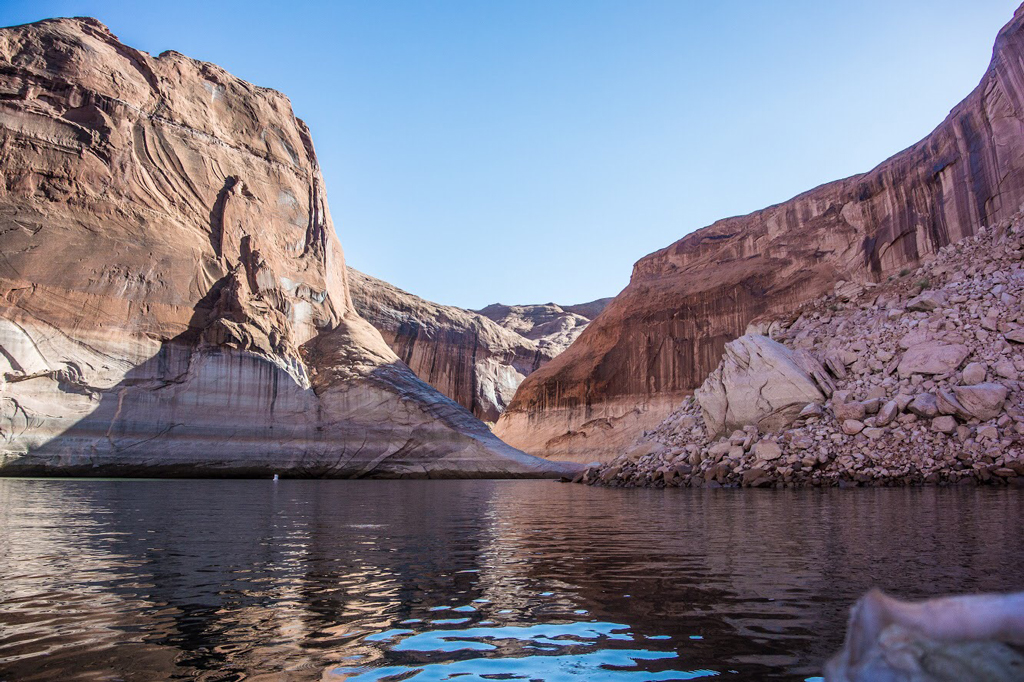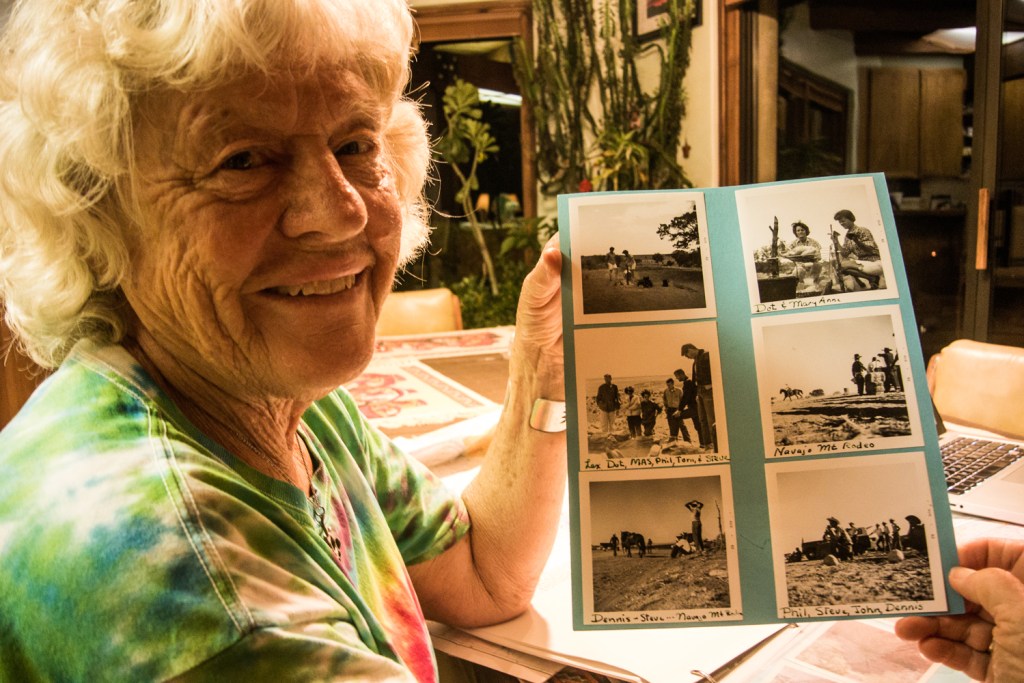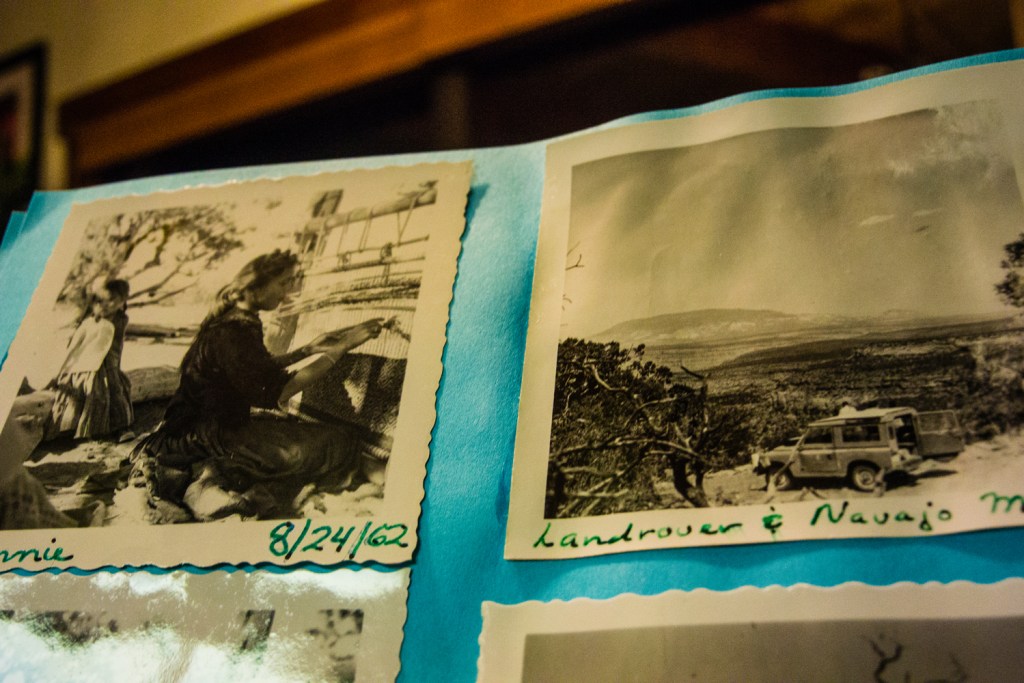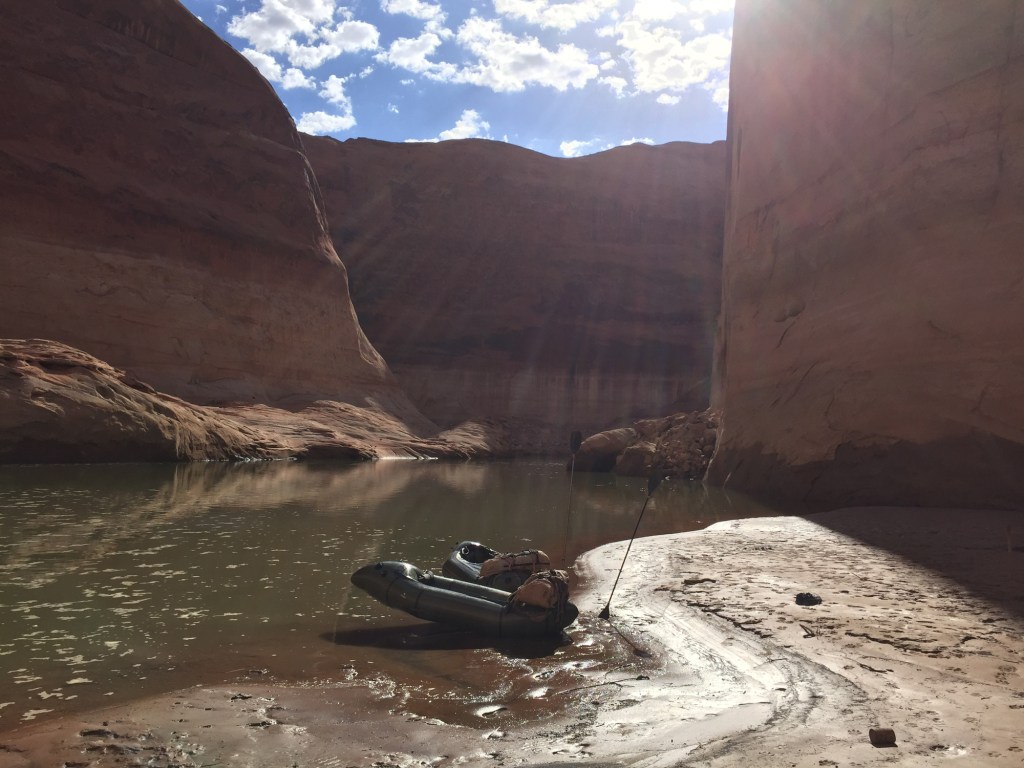“They said if we didn’t succeed they would never hire women again.”
Ada Hatch’s smile reflects the brilliance of her yellow sundress when she says this. But it’s not a sugary smile; it’s a grin full of spunk and vigor, one that hints at true adventure and wisdom.
Now 76 years old, Ada spent the summer of 1962 working as one of the Southwest’s first women hired to work on an archaeological site as part of the Glen Canyon Salvage Project (1956–1963). It was her first job and a mission backed by the National Park Service through the Museum of Northern Arizona. As construction on the Glen Canyon Dam neared completion, the project, which spanned more than 2,000 prehistoric sites, aimed to conduct “archaeological, ethnographic and historical research under emergency conditions in the Glen Canyon area of the Colorado River in response to the threat of losses posed by the Glen Canyon Dam” (excerpt from a letter sent to Ada from the Department of the Interior). It was a rapid-paced effort to uncover, contextualize and attempt to understand the complex history of the region’s Ancestral Puebloan cultures who lived in the area long before any European settlers. An already challenging task was crunched into a nine-year time span before the opportunity to learn from the land would be lost forever.
Constructed between 1956 and 1963, the Glen Canyon Dam created one of the largest man-made reservoirs in the United States—Lake Powell—diverting water from the Colorado River to provide water and hydroelectric power to millions of people in the West. The controversial project drastically changed the landscape from a flowing river between towering red sandstone canyons (186 miles within Glen Canyon alone) to a huge lake with 1,960 miles of shoreline and a capacity to store more than 26 million acre-feet of water. The water levels began rising in 1963 and continued to rise until 1980, flooding the canyons above the dam and around the Colorado River. Countless side canyons, narrow slot canyons, picturesque grottoes and 18 rapids were lost, along with an irreplaceable wealth of archaeological sites.

A present-day photo taken in Glen Canyon. The geography of the canyon changed drastically with the formation of Lake Powell and the development of the Glen Canyon Dam, which was completed in 1963. (Photo Credit: Morgan Sjogren)
Like the pottery and artifacts that Ada helped unearth from the desert soil, there are layers to her story. It requires digging. Her immersion into canyon country began in a place with a long history that is now obscured. The research, documentation and stories she was part of cannot bring back what is submerged under the water and silt created by Glen Canyon Dam. But like the artifacts Ada and her crew unearthed, Ada’s stories are a reminder that if we listen, we may find the past has taken new forms.
Ada, a 51-year resident of Page, Arizona, a small town originally built for the workers on Glen Canyon Dam, welcomed me into her home built lovingly, piece by piece, by her now-deceased husband LeRoy. “I met my husband when I was 35, I was married for 35 years, and now I’m on to the next 35. It’s been a good life.” Ready to tell her story, Ada had a photo album, newspaper clippings and maps out on the table. The essential components for an evening of desert-dweller raconteuring.
Glancing around Ada’s home, it’s impossible to resist the urge to gaze out the window, where distant red sandstone cliffs sit adjacent to Lees Ferry and the Colorado River just prior to its entrance into the Grand Canyon. Every wall, shelf and tabletop is thoughtfully adorned with local decor, artwork and photography. It’s clear that Ada herself is a part of the desert and a colorful piece of its artwork. “Any art that I purchase for my collection, I make sure to learn how to make it myself so that I can fully appreciate it.” She shows me a Navajo-style rug (still on the loom), silver molds and baskets she has woven.
The inspiration for Ada’s collection began the summer of 1962 on Paiute Mesa at the site known to archaeologists as “Pottery Pueblo,” a structure from the Tsegi phase of the Pueblo III culture. The excavation uncovered 15 courtyards, 81 rooms and 5 kivas. Specifically, Ada and the women in her cohort, Dorothy “Dottie” Deal and Mary Anne Stein, were tasked with the tedious work of cleaning, stamping and cataloging artifacts, mainly potsherds. In addition, 10 Navajo men helped excavate the site while a group of archaeologists—who were also men—managed the research and oversaw the work. The ceramic evidence collected by the group helped determine that the structures were inhabited by household units of migrant farming families between A.D. 1260 and 1280. (Stein, Mary Anne, 1984, Pottery Pueblo: A Tsegi Phase Village On Paiute Mesa, Utah; Dissertation for Southern Methodist University).

Ada holds up black-and-white photographs of the summer she spent excavating a prehistoric site near the Glen Canyon Dam during the Glen Canyon Salvage Project in 1962. (Photo Credit: Ada Hatch and Morgan Sjogren)
Inspired by the ancient artistry, Ada, Dottie and Mary Anne took the time to learn to make coil pots in the traditional style: “After you scrub 5,000 pieces of pottery, you want to understand the full weight of what you are working on. We collected the clay, boiled beeweed for the coating, and picked yucca to make paintbrushes.” Ada kept the pot she made for many years before it eventually fell apart.
Although Ada only worked as an excavator for a single summer, the experience sparked a lifelong love affair with the area where she still hikes weekly and explores the endless maze of canyons that weave in and out of Lake Powell’s shoreline. “I said I’ll stay here until I see every canyon. I find a new canyon every single time I go out.” Page is situated near many of the Southwest’s major geological attractions—the Grand Canyon, Vermilion Cliffs, Glen Canyon National Recreation Area, the Monument Valley Navajo Tribal Park and Grand Staircase-Escalante National Monument.
Ada heads to the kitchen and returns with ice cream and a plate of cookies (fuel for our mission to dig up old photos, read through her documents and pinpoint locations on topo maps), and then opens up a map searching for the location of the Pottery Pueblo site. She finds the site on the map and explains there was no road to get there in 1962 and that today, even with the road partially paved, it would still take many hours to reach. The red sandstone mesa is more than 500 feet across and flanked by two box canyons. The climate isn’t for the faint of heart—the site is surrounded by low piñon, junipers and shrubs, which offer minimal relief from the heat.
Thumbing through black-and-white photographs of their camp, work sites and artifacts, Ada reflects on what she considers the best summer of her life. There are photographs of the entire crew reuniting in 1999. Beyond memories of sleeping under the stars, Ada’s recollections are filled with shenanigans. For example, she and the other women pulled a squeamish prank to find out whether the men actually brushed their teeth, “We stuck a mouse’s tail in a toothpaste tube. It took three days for it to come out and it made them scream!” Ada, Dottie and Mary Anne still remain close friends, visiting each other annually. Several of the men have passed away in the last few years, but Ada’s memories are all fond, especially for her boss, archaeologist Alexander “Lex” Lindsay.

Detail of a black-and-white photograph of a woman working on a loom during the summer of 1962. (Photo Credit: Ada Hatch and Morgan Sjogren)
Ada explains, “He was very serious. He was anxious for us to go. He told us, ‘You girls are gonna make the difference, and if you succeed out here this summer you will put more women in the field. But if you don’t succeed, we’re not going to send any more out.’ ” Ada pauses, “And unfortunately that’s just the way that things were.”
She explains that Lindsay’s concerns were largely focused on whether the women could withstand the extreme living conditions, including primitive camping in a remote area of the desert during the hottest time of year with limited water. Ada affirms that all three women handled the accommodations without any issues.
As archaeologist William D. Lipe, who also worked on another site for the Glen Canyon Salvage Project, notes in his paper, “Glen Canyon, Dolores, and Animas-LaPlata: Big Projects and Big Changes in Public Archaeology,” in the 1950s, the field of archaeology had a common practice of placing men in the field and sequestering women in the lab—or worse, not hiring them at all. Despite the stern pronouncement made by Ada’s superior, the Northern Arizona University sector of the Glen Canyon Salvage Project was one of the first to challenge the norm.
Following that summer, Mary Ann went on to earn a Ph.D. in archaeology, using research from the excavation to write her dissertation “An Archaeological Survey Of Paiute Mesa” (1966). Ada earned a master’s degree in anthropology from Northern Arizona University, while her work on Pottery Pueblo inspired her to learn the Diné language and become an elementary school teacher at the Tuba City Unified School District. To this day, she still volunteers in the Page Unified School District, teaching students to read and how to write in cursive.
Ada arrived in the Southwest after the dam was already built and the water was creeping up, making her work on the Glen Canyon Salvage Project a bit like diving into the deep end. Her work required her to strive to preserve a place she would never fully know. And in turn, she has spent a lifetime in the Southwest and continues to use Lake Powell and her boat as a launching point to explore new canyons. The past has opened up new doors.

Packrafts aid in the exploration of one of Lake Powell’s side canyons. (Photo Credit: Morgan Sjogren)
In addition to exploring the area surrounding Glen Canyon National Recreation Area, Ada is committed to preserving and protecting it. “It’s been hard to adjust to the increase in tourism to the area over the last few years. Especially the traffic and the trash.” Ada says human waste and disrespect for the land might pose the most imminent threat. She finds and picks up trash on every hike that she goes on and has volunteered for week-long cleaning missions (she humbly highlights this for the way people are treating public lands, not for her services). But beyond the news headlines and politics, Ada feels that the simple act of leaving no trace and picking up trash is a straightforward step that every person who visits our public lands can take right away to conserve them.
Part of the work to protect public lands involves recording and sharing stories. Ada’s experiences exploring the Glen Canyon area for more than 50 years provides incredible context about the future of the places we care about. Ada loves this place so dearly that she made it her home, continues to study it and in turn, helps protect it. The future of any place will always be uncertain, but the intricate layers of a story told with love help carry the legacy of those places into the future.


